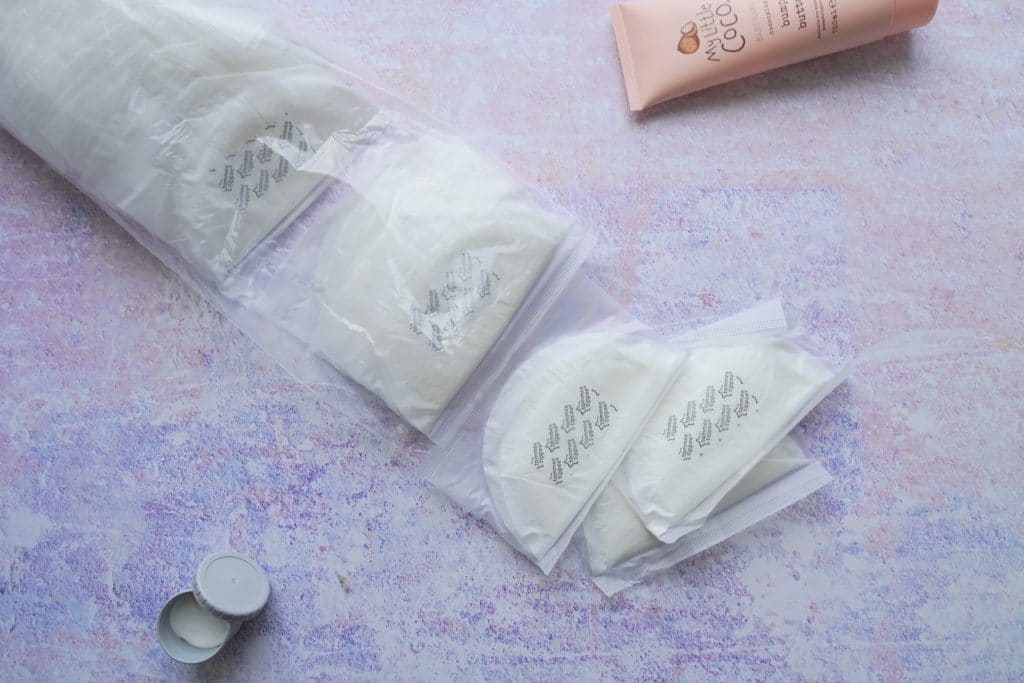Are Nursing Bras Necessary? – Here’s What You Need To Know
Some of the links below are affiliate links. As an Amazon Associate, I earn from qualifying purchases. This means that, at zero cost to you, I will earn an affiliate commission if you click through the link and finalize a purchase.
From the moment you get pregnant until your child is born, you’ve likely thought about which baby items are the most important. Many products claim to be “must-haves” or “lifesavers” to a breastfeeding parent, but are nursing bras necessary?
Nursing bras aren’t necessary. In actuality, you don’t need a bra at all. However, wearing one that fits correctly will provide extra comfort, support, and easy access during feedings. Nursing bras also hold in nursing and cooling pads easier than if you just wore a tight-fitted top or standard bra.
Truthfully, there aren’t any “necessary” products for nursing, but nursing bras are helpful to those that decide to wear them. In this article, I’ll explore how nursing bras work and how to find the right one, so keep reading.
What Is a Nursing Bra?
At first glance, nursing bras look identical to their regular counterparts. However, nursing bras have more components than most traditional bras.
A nursing bra is a bra that supports a fluctuating chest size and makes it easier to nurse. It comes with a clasp or panel, and provides quick access during feeding times. Regular bras, notably, don’t have these special features.

While you could technically put on a regular bra in between feedings, it isn’t very practical and could ruin the integrity of the bra. In the case of sports bras, doing so could potentially lead to clogged ducts and eventually mastitis, if left alone.
Nursing bras, on the other hand, are specifically designed for those with engorged breasts that are nursing, and are made with stretchy material to accommodate size fluctuations.
Let’s take a look at some of the advantages and disadvantages of wearing a nursing bra.
The Advantages of Nursing Bras
Wearing a nursing bra can be helpful for many reasons, such as:
- They provide support and relief. Regardless of your bra size, nursing bras grow with your body. Not to mention the added support they offer during early nursing days when engorgement feels unbearable.
- Late-night feeds become less of a hassle. This is especially true for families that choose to safely co-sleep. Nighttime nursing bras make late-night feeds feel almost effortless. All you have to do is pull the panel over, and your baby is good to go.
- They’re comfortable for changing bodies. Each person is different, and while one mom may only increase one cup size, another may grow three or four sizes bigger. Nursing bras are built to be flexible and can fit a variety of sizes.
- They’re good at mess protection and other means of support. Any seasoned, breastfeeding mom can tell you that leaking is inevitable. Rather than sticking a nursing pad on your shirt and hoping for the best, a nursing bra will hold them in place to soak up any leaks. They’re also more convenient for securing heating and cooling pads that provide relief during engorgement or mastitis.
The Disadvantages of Nursing Bras
Nursing bras may not be the right choice for everyone, and that’s okay! It’s important to look at the positives and negatives before deciding whether or not to make the purchase. So, what are the negatives? Let’s explore them:
- Some nursing bras use underwires. Anyone who has owned and worn an underwire bra before can attest to how annoying it is when the wire punctures the fabric (and your ribs). Nursing bras are no exception here.
- The clasps/hooks that hold the cup closed are sometimes sharp. While not every nursing bra has sharp fasteners, there are some out there that can scratch you if you aren’t careful.
- Your wardrobe will be limited. If you don’t like showing your bra straps, your wardrobe will likely be limited if you only wear nursing bras. They only come in one “t-shirt” style, which can be frustrating if you enjoy dressing up.
What Happens If I Just Go Braless?
While it is tempting to go braless, those with a bustier frame may experience more pain and discomfort when nursing. Larger breasts can result in more physical distress, including muscle soreness and back pains, while issues like mastitis, can also be cause for concern.
Theoretically, you could go braless, and that would be most accessible to your hungry baby, but it might be more beneficial for your overall comfort to invest in a nursing bra.
How To Find the Right Fit
So, let’s say you’ve decided to jump on the nursing bra bandwagon. Maybe you’re among the large number of mothers who haven’t shopped for a bra in years. How do you know you’re getting the right size when you don’t even know if your regular bras fit anymore?
Don’t fret; you can follow the step-by-step instructions below. It’s worth noting, though, that while your breasts will likely change, you should still go off of your standard bra size when shopping.
Here are the steps:
- Measure your size. To make sure measurements are correct, you’ll need a non-padded cup size bra that fits you, a tape measure (inches preferred), and a pen and paper to write down your measurements as you go.
- Measure around your over-bust. Do this by wrapping the tape measure around your back and over the largest part of your breasts. Be sure the tape measure is parallel to the ground for the most accurate measurement.

- Write your measurement down. If you find that your measurement isn’t a whole number, you should round it up to the closest whole number. For example, a finding of 36.75 inches (93.35 cm) would round up to 37 inches (94 cm).
- Measure your under-band. While making sure the tape measure is parallel to the ground, wrap the tape around your back and across your ribs. The tape measure should rest right underneath your bust.
- Take note of this measurement. Once again you should round up to the nearest whole number. In this case, let’s say our measurement came out to 31.5 inches (80.01 cm). Our under-bust measurement will then be 32 inches (81 cm).
- Determine your band size. You can use any band size chart to give you your number. In the case of our example, the band size would be 34.
- Calculate your cup size. To do this, subtract your over-bust measurement from your under-band measurement. When calculating 37-32, we end with 5. By looking at a cup size chart, you would see that our example’s cup size is E.
- Repeat one more time to ensure accuracy. This step is optional but it’s better to be safe than sorry. Our theoretical friend measured themselves twice and found they’re a size 34E.
How Long Do You Use Nursing Bras For?
A nursing bra can be used until you are no longer nursing your baby. According to the American Academy of Pediatrics, your baby should be breastfed exclusively until about 6 months and breastfeeding should continue until your baby is at least 12 months old. Some mothers may breastfeed for longer.
If you wish to do so, it’s also safe to continue wearing your nursing bra after weaning as your breasts adjust to the changes.
Are Nursing Bras Expensive?
Nursing bras can be expensive if they’re made with high-quality materials and provide optimal support. It’s possible to find nursing bras at lower prices, but opting for the cheaper ones may mean compromising both quality and comfort.
However, it is possible to find a reliable nursing bra without breaking the bank. Options, like the Kindred Bravely Sublime Hands Free Pumping Bra from Amazon, offer durability and quality support for your nursing period. The Kindred Bravely Sublime lets you clip on a standard breastfeeding panel and a pump panel, which lets you pump without unclipping the panel.

